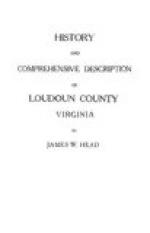[Footnote 31: In alluding to the famous “greenback raid” (October 14, 1864), in which a party of Rangers entered a train of the Baltimore and Ohio Railroad, near Kearneysville, capturing, among other officers, Majors Moore and Ruggles, Federal paymasters, with their funds, Lieutenant Grogan, of the Rangers, has said that the command, the next day, “met at Bloomfield, in Loudoun County, and examined into the condition of our sub-U.S. Treasury, and finding there a net surplus of $168,000, the same was divided among our stockholders ($2,000 each) and circulated so freely in Loudoun that never afterwards was there a pie or blooded horse sold in that section for Confederate money.”]
Many of his followers were recruited in Loudoun County. A few before the advent of Mosby had pursued peaceable vocations; but the command consisted in the main of men who had seen active service in the cavalry and infantry regiments, but tiring of the routine and discipline of the camp had returned to their homes in Loudoun and adjoining counties. At times he had with him dauntless spirits who had been incapacitated for infantry duty by reason of wounds received in action, some of these carrying crutches along with them tied to their saddle bows. At another time he enrolled several experienced fighters who had been absent from their regiments without leave ever since the first battle of Bull Run—a period of nearly two years.
With this promiscuous following, which at no time exceeded one hundred men, he instituted a long unbroken series of successful strategems, surprises, and night attacks, harassing the communications of the Federal armies, confusing their plans by capturing dispatches, destroying supply trains, subjecting their outposts to the wear and tear of a perpetual skirmish, in short, inflicting all the mischief possible for a small body of cavalry moving rapidly from point to point on the communications of an army.
He believed that by incessant attacks he could compel the enemy either greatly to contract his lines or to reinforce them, both of which would have been of great advantage to the Southern cause. By assuming the aggressive, a rule from which he not once departed, he could force the enemy to guard a hundred points, leaving himself free to select any one of them for attack.
But the theories, purposes, and methods of this peer of partisan leaders is best explained by himself. Simply and unostentatiously, but withal convincingly, expressed, they give to the man and his deeds the unmistakable semblance of fairness and legitimacy. These, together with his masterly defense of partisan warfare, follow in modified and disconnected form:




